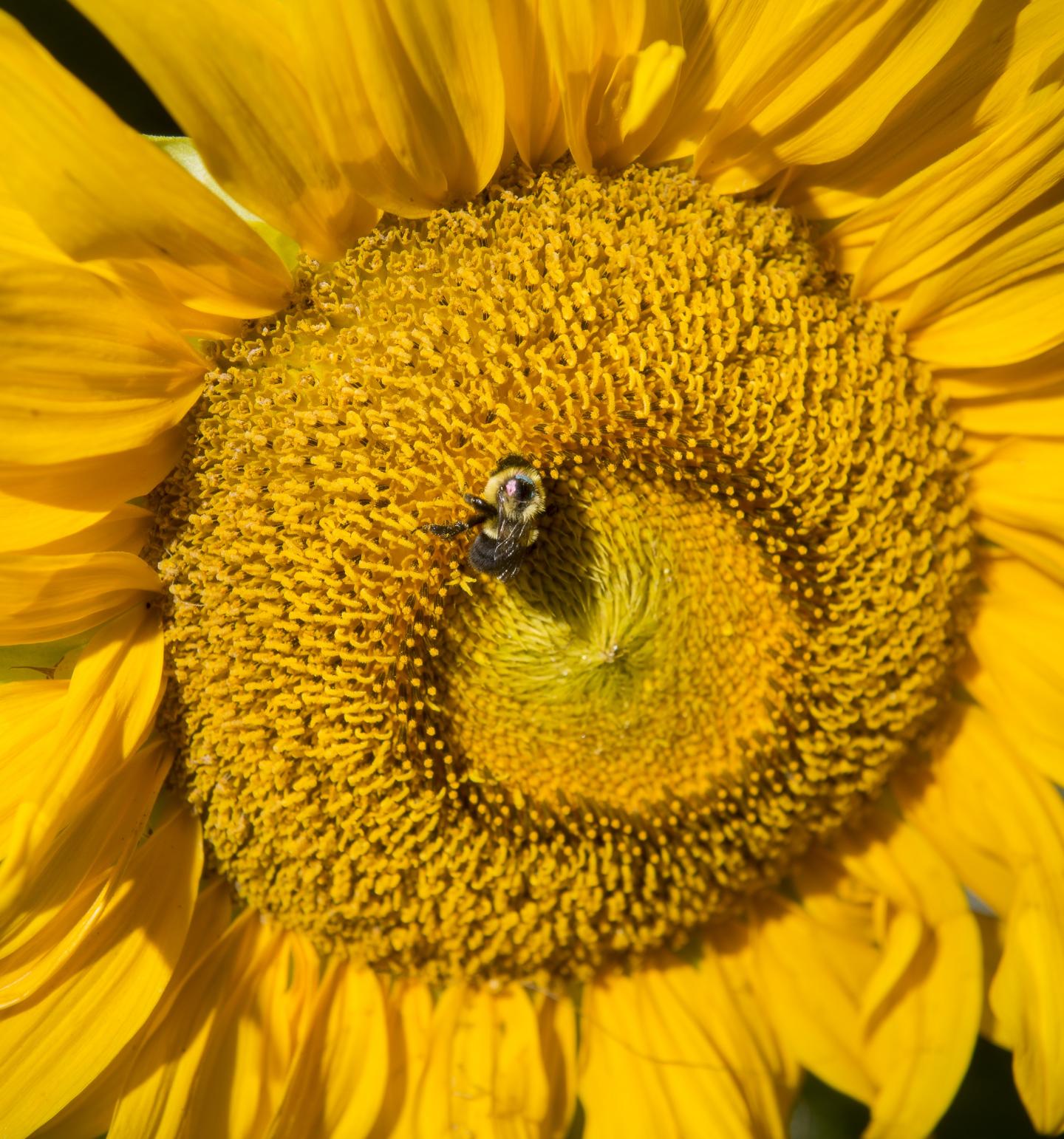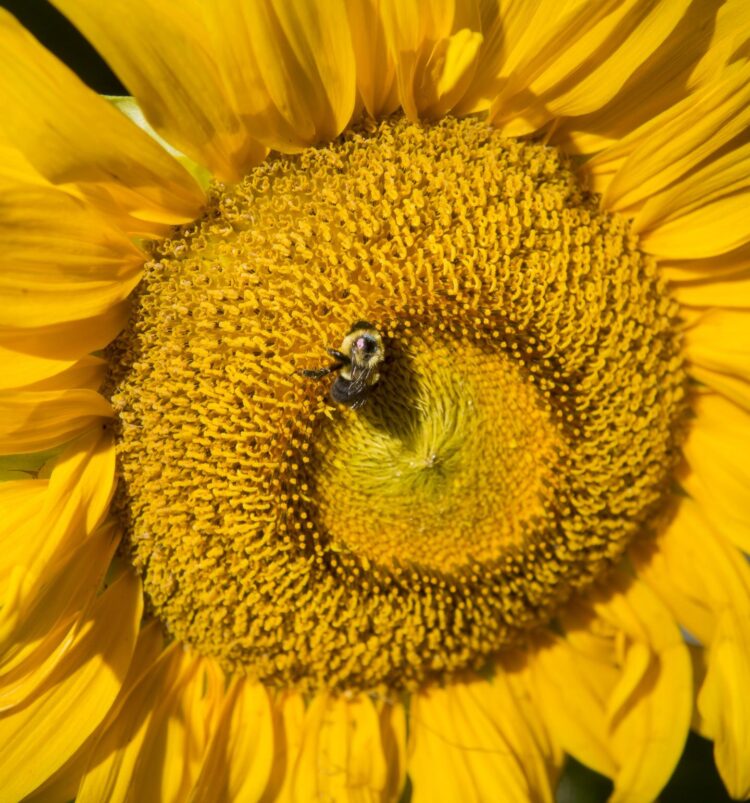UMass Amherst, NC State biologists study risks and benefits associated with floral strips

Credit: Ben Barnhart
AMHERST, Mass. – A new study reported this week by evolutionary ecologist Lynn Adler at the University of Massachusetts Amherst and Rebecca Irwin of North Carolina State University, with others, suggests that flower strips – rows of pollinator-friendly flowers planted with crops – offer benefits for common Eastern bumblebee (Bombus impatiens) colony reproduction, but some plants do increase pathogen infection risk.
As Adler and colleagues point out, pollinator declines affect food security, and pollinators are threatened by such stressors as pathogens and inadequate food. Bumblebees feed on pollen and nectar they gather from such plants as sunflower and milkweed. But bumblebees are also likely to acquire a gut disease pathogen, Crithia bombi, from some of these plant species more than others, the authors note.
Until now, the effect of plant species composition on bee disease was unknown, they add. Study details appear in Proceedings of the National Academy of Sciences.
In earlier work on flowers and bee infection, Adler explains, “We evaluated 15 plant species by putting the same amount of C. bombi on each, letting a bee forage, and then seeing whether and how bad an infection it developed. We used that to designate plant species as ‘high- or low-infection’ for this study.” Low-infection plants include sunflower and thyme; high-infection plants include swamp milkweed and purple loosestrife.
For this study, the researchers placed bees in tents in three conditions – canola plants only and no flower strips (controls), canola and high-infection flower strips, or canola plus low-infection flower strips – to measure and compare effects on bee infection load and reproduction success. Though bees in the high-infection strips saw double the infection load compared to low-infection flower strips, bee reproduction was higher with any flower strips compared to canola only, no flower strips. “Thus, floral resources in flowering strips benefited bees,” the authors state, despite the added disease risk.
Adler says, “The bees were all infected with the same amount of pathogen and then allowed to forage, so the plants could increase or decrease infection.” The tradeoff – more bee reproduction but higher pathogen infection rates – may be acceptable, she adds. “It depends on how critical food versus the pathogen is for pollinators,” she adds. Irwin, a professor of applied ecology, says, “Flowering strips are becoming more common as people look for ways to mitigate pollinator declines.”
Further, Adler points out, “Crithidia is somewhat benign, but if these patterns hold for other pathogens like Nosema, a common honey bee disease, it may be more of a concern. Right now I would not recommend stopping our investment in flowering strips.”
The researchers hope to continue investigating the flower strip effects on bee populations and health by including other bee species and pathogens. Adler says, “I think we need a much more comprehensive program to evaluate how pollinator habitat characteristics affect pathogen spread to make informed choices. In the meantime, providing flowering resources in pollinator habitat is still the best path forward.”
###
Other co-authors include Nicholas Barber at San Diego State University and Olivia Biller at Thomas Jefferson University. This work was funded by the U.S. Department of Agriculture’s Agriculture and Food Research Initiative, the National Institutes of Health, the National Science Foundation and the U.S. Department of Agriculture’s Cooperative State Research Education and Extension Service.
Media Contact
Janet Lathrop
[email protected]
Original Source
https:/
Related Journal Article
http://dx.





